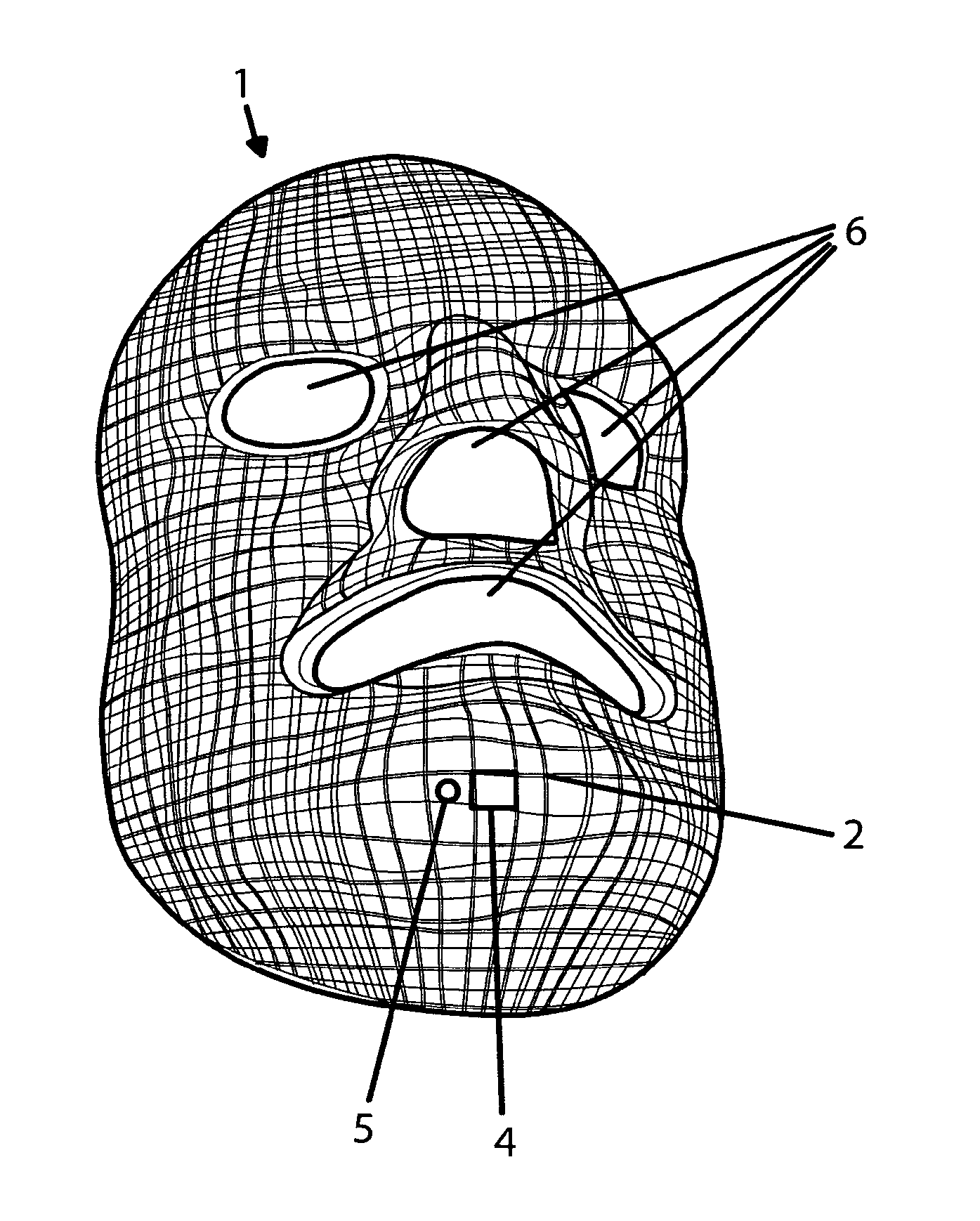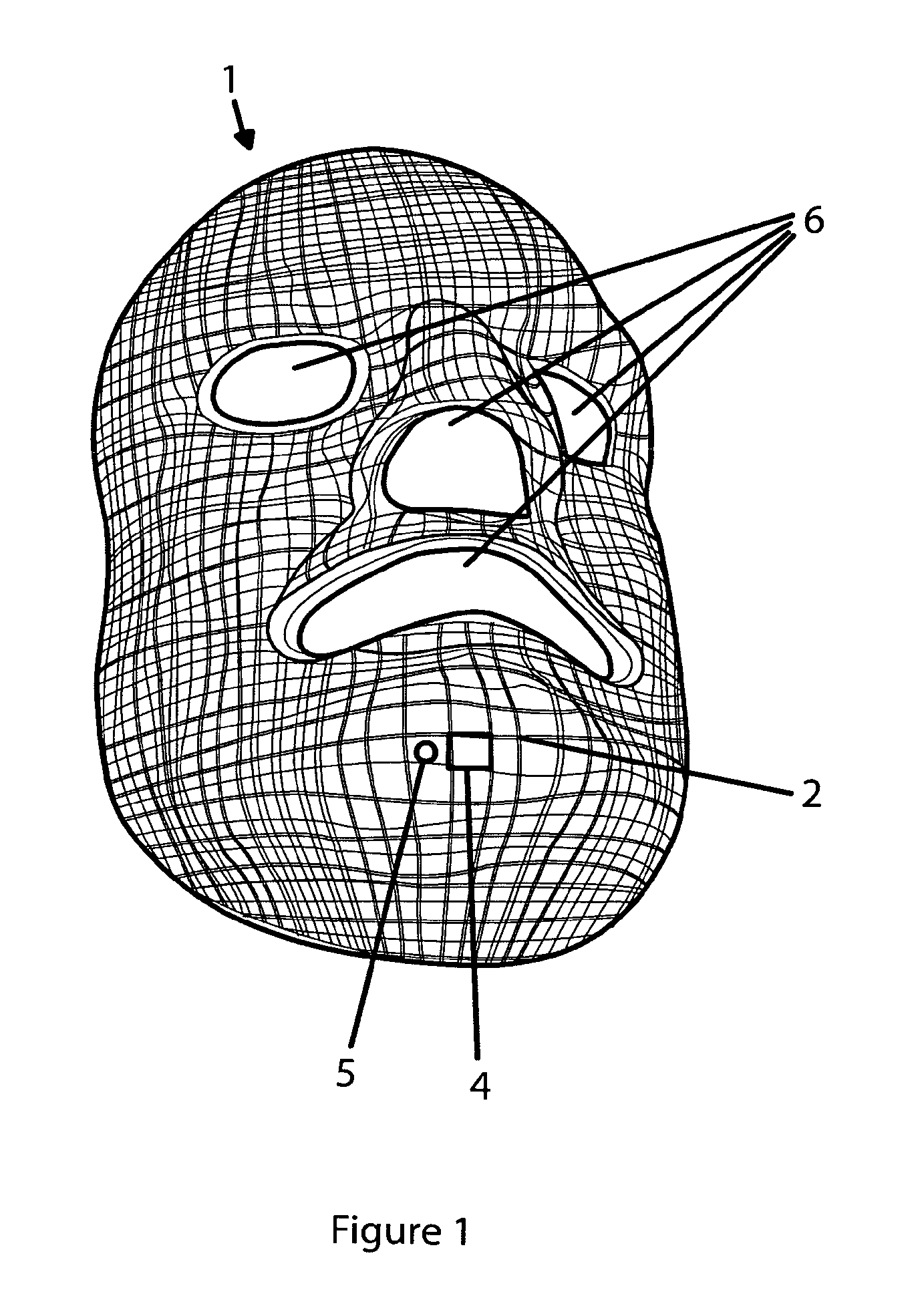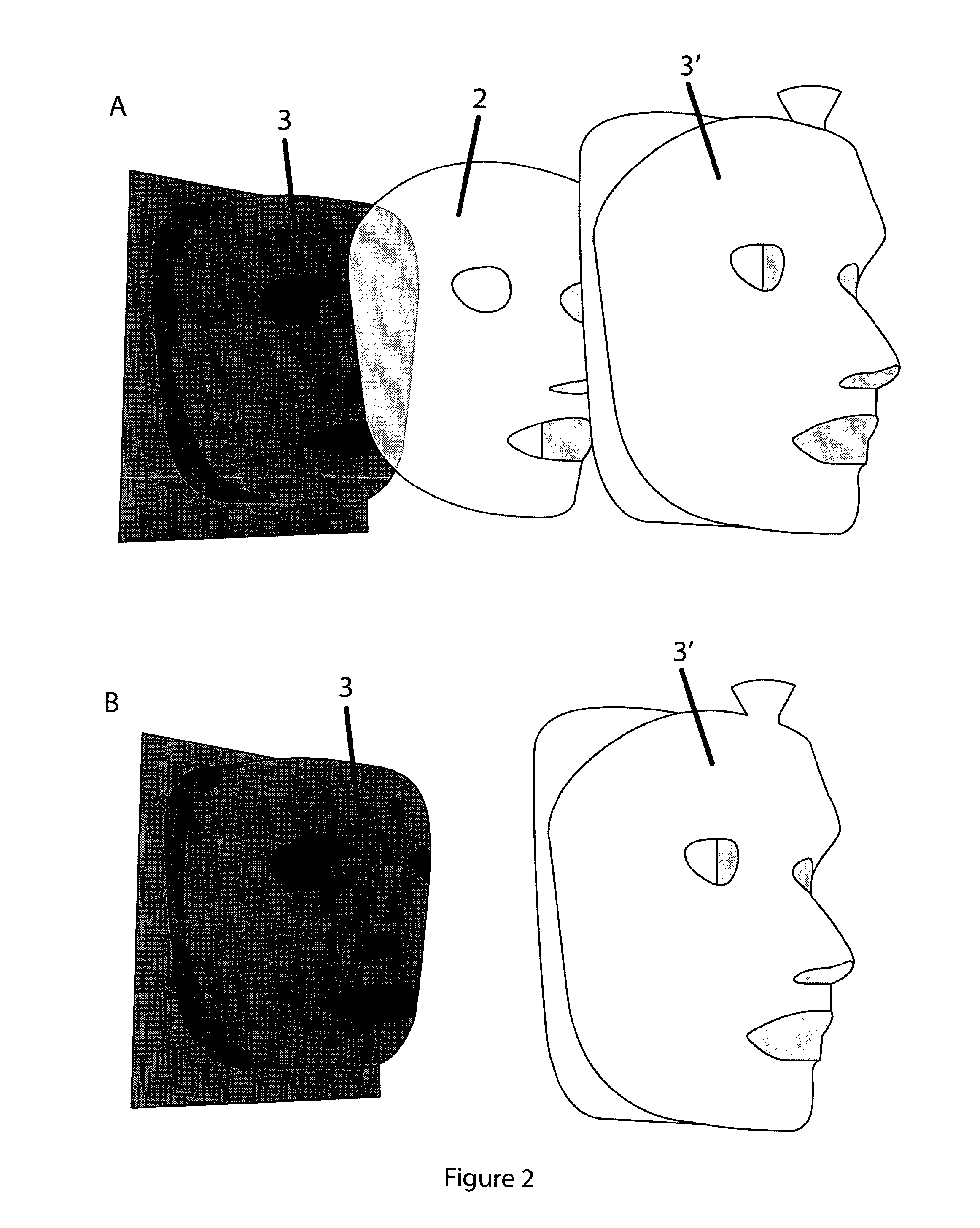Lattice structure made by additive manufacturing
a technology of additive manufacturing and freeform structure, which is applied in the direction of additive manufacturing apparatus, packaging goods type, non-adhesive dressings, etc., can solve the problems of affecting the self-esteem of patients, facial burns can present serious visual and pulmonary complications, and affect the function of patients, so as to achieve different stiffness in different parts
- Summary
- Abstract
- Description
- Claims
- Application Information
AI Technical Summary
Benefits of technology
Problems solved by technology
Method used
Image
Examples
examples
a) Facial Mask
[0106]FIG. 1 shows a free-form structure (1) according to a particular embodiment of the present invention. The free-form structure fits the surface of a person's face. Specifically, the free-form structure is a facial mask which can be used in (burn) wound treatment. FIG. 1 shows that the free-form structure comprises a lattice structure (2) which is impregnated in a polymeric material (5). The open lattice structure and the transparency of the polymer ensure that the free-form structure is transparent. The lattice structure is defined by unit cells (4) which have a size between 1 and 20 mm. The lattice structure is provided with varying unit cell geometries and dimensions, in order to control the stiffness of the free-form structure. The lattice structure further comprises holes (6) which are not impregnated, for the eyes, nose and mouth.
b) Overmouldinq Process
[0107]Methods for manufacturing a free-form structure are provided herein which involve the step of impregna...
PUM
| Property | Measurement | Unit |
|---|---|---|
| size | aaaaa | aaaaa |
| size | aaaaa | aaaaa |
| volume | aaaaa | aaaaa |
Abstract
Description
Claims
Application Information
 Login to View More
Login to View More - R&D
- Intellectual Property
- Life Sciences
- Materials
- Tech Scout
- Unparalleled Data Quality
- Higher Quality Content
- 60% Fewer Hallucinations
Browse by: Latest US Patents, China's latest patents, Technical Efficacy Thesaurus, Application Domain, Technology Topic, Popular Technical Reports.
© 2025 PatSnap. All rights reserved.Legal|Privacy policy|Modern Slavery Act Transparency Statement|Sitemap|About US| Contact US: help@patsnap.com



